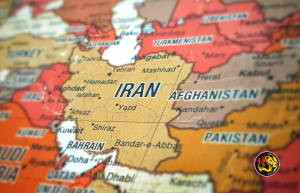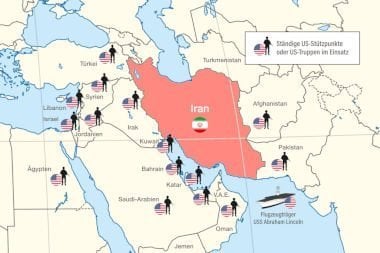Four Things You Need to Know About Iran

All Global Research articles can be read in 51 languages by activating the Translate Website button below the author’s name (only available in desktop version).
To receive Global Research’s Daily Newsletter (selected articles), click here.
Click the share button above to email/forward this article to your friends and colleagues. Follow us on Instagram and Twitter and subscribe to our Telegram Channel. Feel free to repost and share widely Global Research articles.
Global Research Wants to Hear From You!
***
Because of the sudden death of its president, Iran has again been talked about a lot these days, but little is known about this country. Below is a modest attempt at providing some clarity.
1. The Importance of Iran
The country has the fourth largest oil reserves in the world and the second largest gas reserves. Despite global warming, oil and gas remain strategically very important raw materials. At current prices, Iran’s fossil reserves are worth many thousands of billions of dollars.
Iran’s location is also of great strategic importance. It is located in the Middle East, a region where 48 percent of the oil reserves and 40 percent of the gas reserves are found. This region also connects Europe with Asia and is crucial for international trade.
The Strait of Hormuz, near the Iranian coast, is a very narrow artery through which about a fifth of the Middle East’s oil passes and a fifth of the world’s liquefied natural gas. That also makes the country strategically very important.
With a population of 90 million, Iran is a sub-regional superpower. It is also the most important country for the Shiites, meaning its influence also extends into countries in the region with significant Shiite populations, such as Iraq, Lebanon, Yemen and Syria. Shia Islam is one of the two major branches of Islam, Sunni Islam is the other (and largest) branch.
The great importance of this Persian country was not lost on the West. In 1953, the US and Great Britain organized a coup d’état to protect British oil interests. Until 1979, Iran was a vassal of the US. Besides Israel and Saudi Arabia, Tehran was the main pawn of the US and the West to keep the region under its thumb.
That situation changed in 1979. There was a revolution led by Ayatollah Khomeini. From then on, Tehran began to chart its own independent course, which was obviously not to the liking of the West. Which brings us to the next point.
2. Why Is the West So Hostile to Iran?
Since 1979, Iran has been undermining the rule of the West and Israel in the region through its autonomous course and through its foreign influence. Because of the major economic and geostrategic interests that are at stake, the US in particular, in collaboration with Israel, has done everything possible to implement regime change. Because this failed, Washington attempted to weaken and destabilize the country.
Conversely, Israel was armed to the teeth by the West and the country was even allowed to develop nuclear weapons.
All countries that follow their own course independent of the West will suffer the same fate as Iran. Just think of Cuba, Venezuela, Nicaragua or China. That has nothing to do with human rights. Just look at how the West pampers Saudi Arabia, or how Israel can carry out its genocide against Gaza virtually unhindered.
Immediately after the 1979 revolution, Washington imposed economic sanctions on Iran. From 2006, those sanctions have spiraled, ostensibly to stop Iran’s nuclear program. There was a slight relaxation under Obama, but since Trump there have been heavy sanctions aimed at oil exports, financial transactions, shipping, and other sectors of the Iranian economy.
With the sanctions, the West hopes to weaken the country economically and undermine the authority of the Iranian government, hoping that this will lead to regime change or that the country will become less militant in the region.
In any case, these sanctions have significant consequences for the Iranian economy. The value of Iran’s own currency, the rial, has fallen sharply, there is a skyrocketing inflation of more than 40 percent, and youth unemployment is higher than 20 percent.
 The West has also tried to turn the Sunni countries in the region against Iran, but since the Iran-Saudi Arabia deal, that divide-and-rule strategy has been failing. Now that Iran has also become a member of the BRICS+ and maintains good ties with Russia and China, the enmity of the West is greater than ever.
The West has also tried to turn the Sunni countries in the region against Iran, but since the Iran-Saudi Arabia deal, that divide-and-rule strategy has been failing. Now that Iran has also become a member of the BRICS+ and maintains good ties with Russia and China, the enmity of the West is greater than ever.
This enmity is also reflected in the mainstream media. Similar to that other ‘troublesome’ countries, coverage of Iran is heavily biased. Naturally, this country has many problems, and these should of course be reported on.
But invariably the country is portrayed in a negative light and mistakes or problems are magnified.
For reliable information on Iran, the best way is consulting alternative media.
3. Who Actually Holds the Power in Iran?
Iran’s political system bears some similarities to ours. There is a separation of powers and an elected parliament that drafts laws, approves the budget and has the power to hold politicians accountable.
Compared to most neighboring countries, the level of democracy is fairly high. For example, the United Arab Emirates, Qatar, Oman and Saudi Arabia do not have a parliament. The latter country does not even have a constitution.
Compared to our system, there are important differences. In western countries, the economic elite has a lot of power and influence behind the scenes. Parliaments have very little say in economic matters: it is the business world that determines how many investments are made and where. And monetary policy is determined by unelected central banks.
In Iran, the business world has been deliberately sidelined to prevent companies from exerting too much influence or advocating political changes.
Iran has a Supreme Leader, which is comparable to a strong presidential regime such as in France or the US. He’s the most powerful man in the country. He is not directly involved in the legislative process, but can issue guidelines that influence policy direction and legislation. He is elected by an Assembly of Experts. This is a council of 88 Islamic scholars and lawyers who are directly elected by popular vote for an eight-year term.
Iran also has a president. The current one recently perished in a helicopter crash. The president’s powers can be compared to those of a prime minister in a strong presidential regime. He heads the government and executive policy but works within the guidelines set by the Supreme Leader.
A major difference from our political system is the existence of the Islamic Revolutionary Guard Corps (IRGC). It was established shortly after the 1979 revolution. The pre-1979 Iranian army was considered loyal to the former Shah and the West and therefore a possible threat to the new Islamic government. The IRGC was a kind of parallel military force loyal to the new revolutionary order, a force that could balance the regular armed forces.
The IRGC had and has to protect the country from external threats. Given the very hostile attitude of the West and Israel, this was not an unnecessary luxury.
The Guard also aims to protect and uphold the ideals of the Islamic Revolution. In a context of tension and foreign hostility, this leads to the suppression of dissent and the elimination of political opponents in many countries. Iran is no exception to that rule.
The IGRC also plays an important role in supporting friendly militia movements in countries in the region, such as Hezbollah, Hamas, Ansar Allah (the ‘Houthis’) and militias in Iraq and Syria.
Today, the Revolutionary Guard has 120,000 members and is supported by millions of volunteers. Over the years, the IRGC has increased its presence and influence at the expense of the clergy. It is not only an important military power, but also plays a crucial role in Iran’s political world, its economy and internal security.
In other words, the IRGC has become a central pillar of the Islamic Republic of Iran, sometimes described as a shadow government. The Supreme Leader controls the Islamic Revolutionary Guard Corps but takes its advice into consideration. In a sense, in Iran you are dealing with a dual power structure.
4. What Does the Future Hold?
Iran is a highly polarized society. In rural areas and smaller towns, people tend to be more conservative and religious. They attach great importance to stability and the preservation of the Islamic revolution and its associated values. The government may count on a lot of support from them.
In larger cities, and especially among the younger and better educated, the opposite can be seen. They argue for more personal freedoms, more modern lifestyles and a relaxation of strict Islamic rules. For them there must be equality between women and men.
They are often critical of the government and spiritual leadership. In their view the concept that a Supreme Leader determines all aspects of their lives is outdated.
In addition, the economic sanctions have seriously affected the prosperity of large sections of the population. The combination of socio-economic dissatisfaction and the desire for modernization and freedom has led to major protests in 2019 and 2022.
In 2019, in the protests were a response to the increase in petrol prices. The 2022 demonstrations followed the death of a 22-year-old woman who died after being arrested by Iran’s morality police for failing to adhere to strict Islamic dress codes. In both cases, approximately 300 demonstrators were killed. Four people were executed in 2022.
The protests each died out after a few months and did not shake the government. In view of what has happened in Iraq, Syria and Libya, many Iranians are wary of chaos and excessive instability. On the other hand, the ferocity of the protests does show that the Iranian political leadership is facing a fundamental problem, which it will eventually have to find a solution to.
The deceased President Rasai was a hardliner. The question is what kind of person his successor will be. Will it be a hardliner or a more moderate figure, will it be a cleric or someone from the Revolutionary Guards?
This will largely determine the course the government will take in the near future: will it allow social, cultural and political changes that can avert unrest, or will it impose stricter restrictions and suppress dissent, which may will provoke protests and violence again?
The election of a new president is provided by law within fifty days of his death. A large number of dissatisfied Iranians may express their anger by simply not voting. How large the turnout will be in those elections will be an important test for the Iranian government. Less than 41 percent turned out for this year’s parliamentary elections.
*
Note to readers: Please click the share button above. Follow us on Instagram and Twitter and subscribe to our Telegram Channel. Feel free to repost and share widely Global Research articles.
Marc Vandepitte is a Belgian economist and philosopher. He writes on North-South relations, Latin America, Cuba, and China. He is a regular contributor to Global Research.
Note
[1] BRICS+ is a group of 10 countries, named after the initial letters of the English names of the original members Brazil, Russia, India, China and South Africa. From January 1, the BRICS was expanded to include five countries: Egypt, Ethiopia, Iran, Saudi Arabia and the United Arab Emirates.
Featured image is from Silent Crow News



